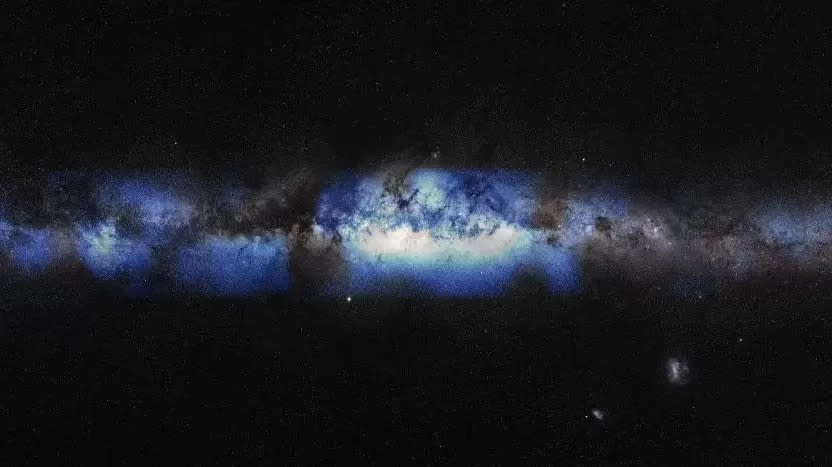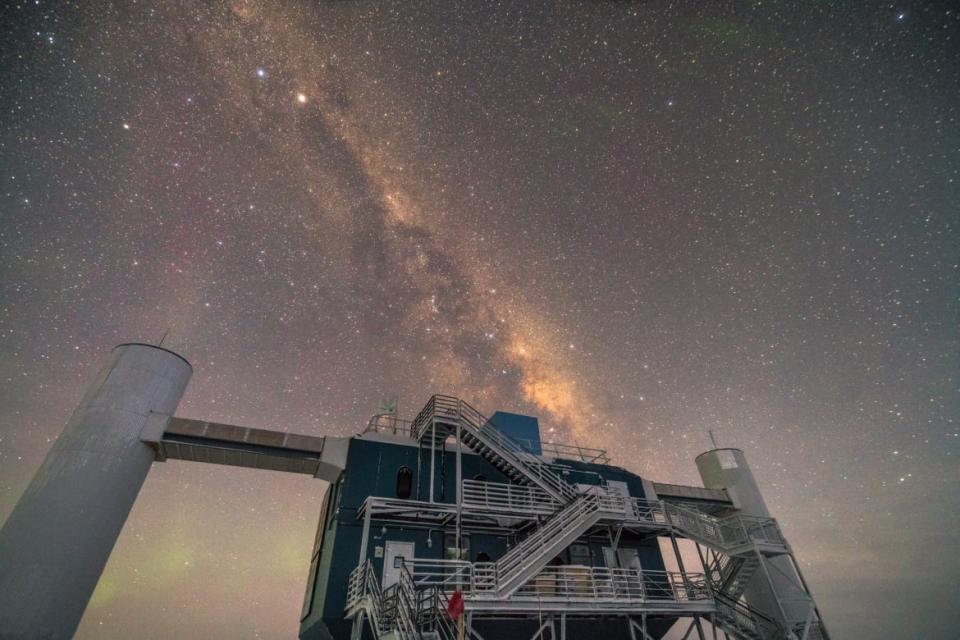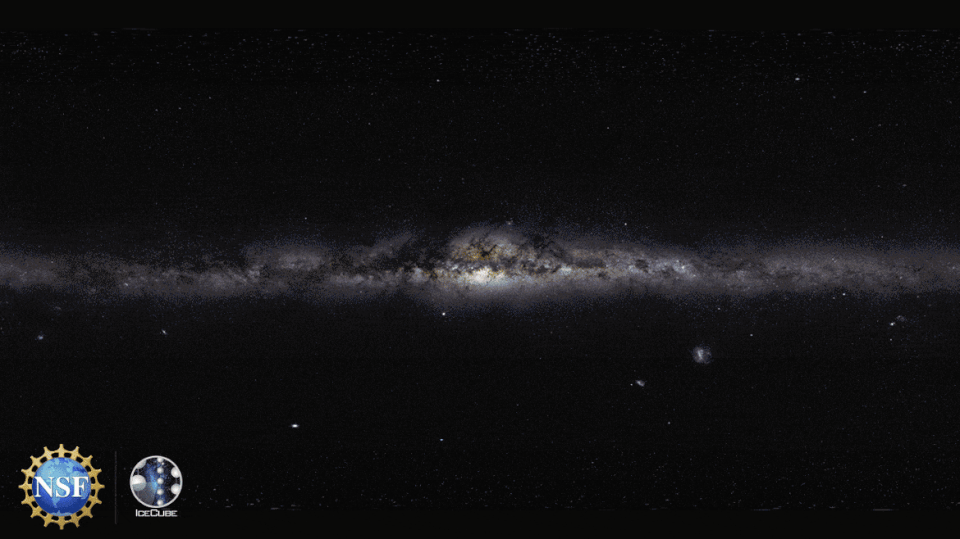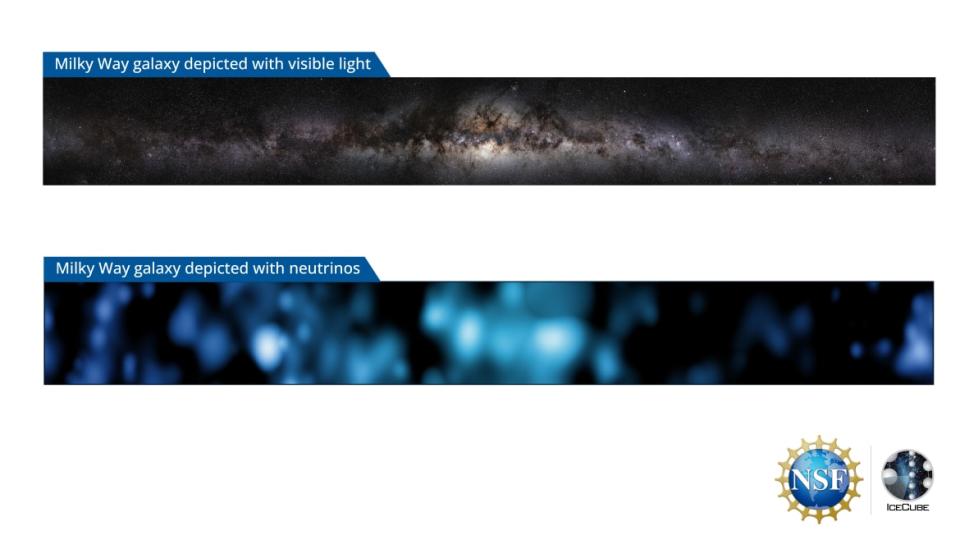Astronomers Detect High-Energy Neutrinos in Milky Way for First Time Ever

We’ve learned to observe the Milky Way in a lot of different ways. Of course, traditional telescopes use visible light—but those only allow us to see so far out. Eventually, objects are too far away and obstacles like gas and dust obstruct our views. That’s why we use different, more powerful instruments.
For example, the James Webb Space Telescope uses infrared to peer into the vast cosmos—to powerful effect. However, even the JWST has its limits. At a certain point, there’s only so much we can see using light alone.
However, there’s a subatomic particle out there born out of some of the most chaotic and extreme astronomical events out there that scientists believe could open the doors for a whole new way of looking at space: the neutrino, or more colloquially known as the “ghost particle.” It’s called such because it’s small. In fact, neutrinos are so small and so ubiquitous that, without you realizing it, 100 trillion neutrinos are passing through your body right now.
Scientists May Have Finally Heard the ‘Hum’ of the Big Bang
Neutrinos are created by natural radioactive decay from phenomena like the nuclear reactions occurring constantly on the sun, and even the more banal processes breakdown of potassium in an old banana. However, astrophysicists have been able to detect powerful, high-energy neutrinos that they believe come from violent astrophysical events like supernovas and stars colliding. These can be used to peer even further into our galaxy than ever before.
That is, if we can sort them out from all the other neutrinos already bombarding Earth.
“The lowest energy of this particle we have detected is already higher than the most energetic particle that we expect to see from the sun,” Nahee Park, a particle astrophysicist at Queens University in Kingston, Canada, told The Daily Beast. She added that it’s more than a billion times more energetic than the ones produced by stars.

The above-ground portion of the IceCube Neutrino Observatory along with the first-ever neutrino-based image of the Milky Way. The detected neutrinos are shown positioned in their approximate location relative to the more familiar optical view of the Milky Way galaxy.
Park recently helped lead an astronomy group using the IceCube Neutrino Observatory (located in Antarctica) with fellow astrophysicist Michael Larson, a postdoc at the University of Maryland, as part of an international group of more than 350 scientists who have been studying the ways we can use neutrinos to observe the galaxy.
The team announced that they’ve successfully used IceCube to detect high-energy neutrinos in the Milky Way on Thursday. The discovery paves the way for an entirely new way to observe the universe around us. The group published a paper of their findings in the journal Science on June 29—and it even includes the first ever image of the Milky Way captured as observed via ghost particles.
“This is a big step for neutrino astronomy,” Larson told The Daily Beast. “We've known about nutrients from astrophysical sources for decades now. We've seen neutrinos from the sun going back ages. And this is the first time that we've actually been able to identify the source of neutrinos from our galaxy.”

An artist's composite image of a photo of the Milky Way captured with visual light along with the first-ever neutrino-based image of the Milky Way. The detected neutrinos, depicted in blue, are shown positioned in their approximate location relative to the more familiar optical view of the Milky Way galaxy.
Ghosts in the Machine
Imagine a box sitting in front of you. It’s taped shut, so if you want to know what’s in the box, you’ll have to dig out the box cutter or scissors to rip the tape and open it up.
However, if you had an X-ray machine, seeing inside the box is much easier. The wavelengths that pass through the relatively small density of the box allows you to get a picture of what’s inside almost as if you’re seeing right through it.
Put that box in a bigger box made of lead, though, and that machine won’t be able to do a single thing. That’s because lead is very dense and absorbs the X-rays as it attempts to pass through it. So it’s much harder to see through the box.
But, if there’s a source of neutrinos in the box, then all bets are off.
“Neutrinos are actually much more powerful than even X-rays, because they go basically through everything,” Lisa Schumacher, an experimental physicist and cosmic particles researcher at the IceCube Neutrino Observatory and was involved in the research, told The Daily Beast. “It would take a light-year worth of lead to block a neutrino with certainty.”

Two images of the Milky Way galaxy. The top is captured with visible light and the bottom is the first-ever captured with neutrinos.
And that’s just with low-energy neutrinos like the ones from our sun. If neutrinos are coming from even more powerful sources like colliding neutron stars or black holes, they become high-energy—and thus even harder to obscure.
That’s what makes the particle so intriguing to astronomers. They’ll be able to point their sensors such as the IceCube Neutrino Observatory at the sky and pick up on neutrino signals from some of the most wildly powerful events in the galaxy that shoot out cosmic rays with the ghost particles for scientists to pick up.
But keep in mind: There are a lot of neutrinos hitting everything, everywhere, all at once—so it effectively becomes searching for a needle in a stack of needles.
“Earth is constantly bombarded by these cosmic rays producing what's what's called an air shower,” Larson explained. “It's effectively the cosmic ray hitting our atmosphere and producing a shower of particles that can reach and really penetrate the ground. They’re difficult to get rid of, because there's so many of them.”
Behold the Supermassive Black Hole at the Center of the Milky Way Galaxy
The IceCube team turned to machine learning in order to separate the signal from the noise. This algorithm allowed them to discern what exactly was a high-energy particle coming from the galaxy from everything else.
“I remember that when this algorithm was [first developed and presented], everyone was like, ‘No, that can't be right. It's too good,’” Schumacher recalls. “And so that's actually one reason why it took so long to get to the result and get it published. We wanted to be really sure that this is right.”
While this discovery is momentous and marks a new way of studying the universe, the team is quick to point out that it’s just the beginning. More work needs to be done to understand the signals that astronomers can now observe from the galaxy and one day nail down its source. That requires not only refining the science behind it, but also upgrading and expanding technologies like the IceCube Neutrino Observatory.
This means building new observatories throughout the world to be able to encapsulate larger swaths of the sky above us. It also means building better ways to separate the signal from the noise via artificial intelligence.
If nothing else, the new discovery is a good reason to look up at the night sky every once in a while—and think about how we’re trying to see it in a new light.
“This is really exciting,” Park said. “It's really opening the door for us to understand how the high energy particle is created, and how they're interacting and moving around our galaxy.”
Get the Daily Beast's biggest scoops and scandals delivered right to your inbox. Sign up now.
Stay informed and gain unlimited access to the Daily Beast's unmatched reporting. Subscribe now.

